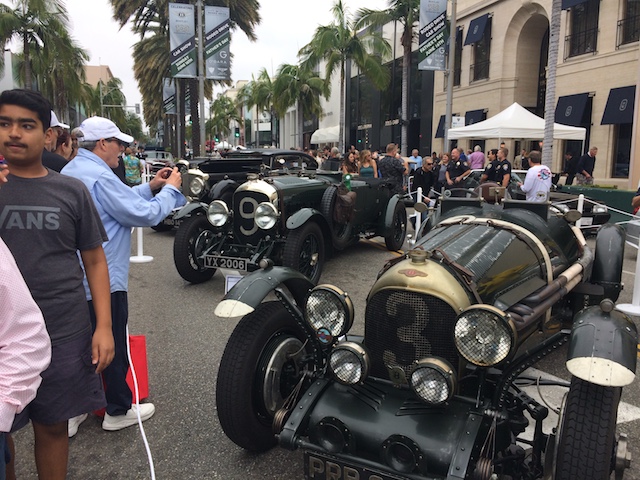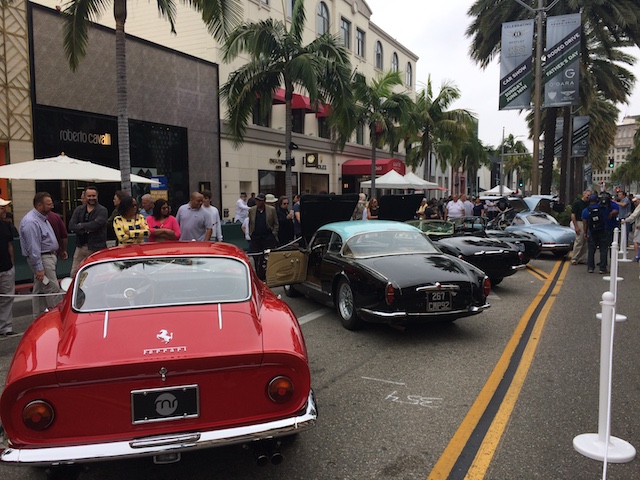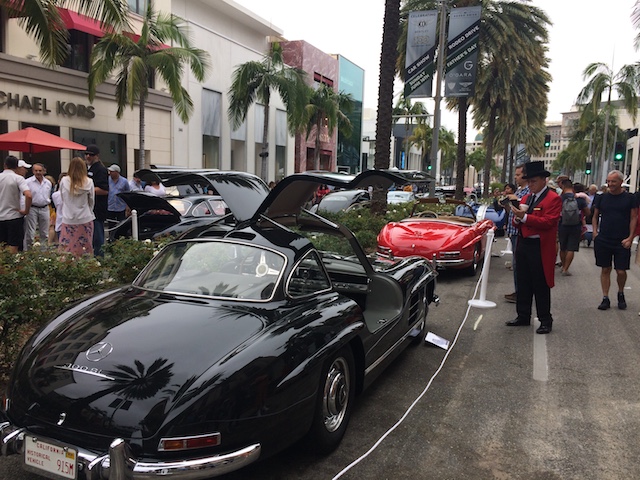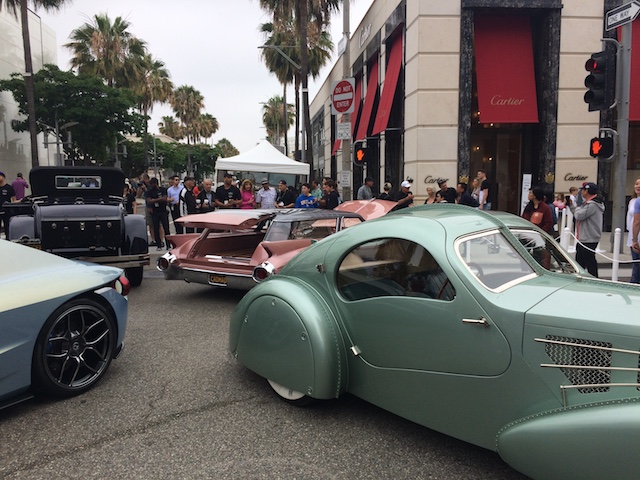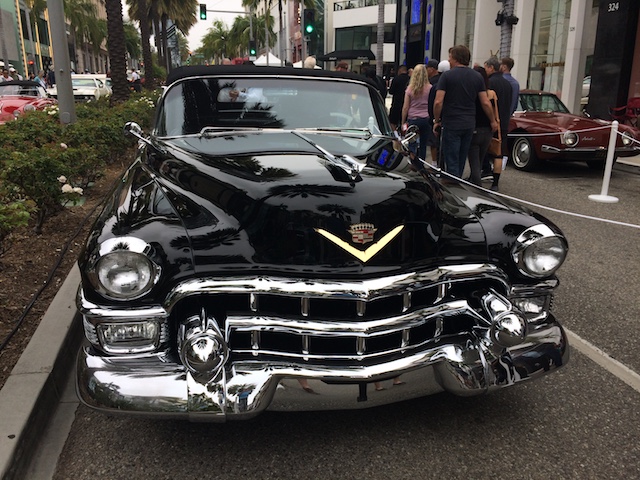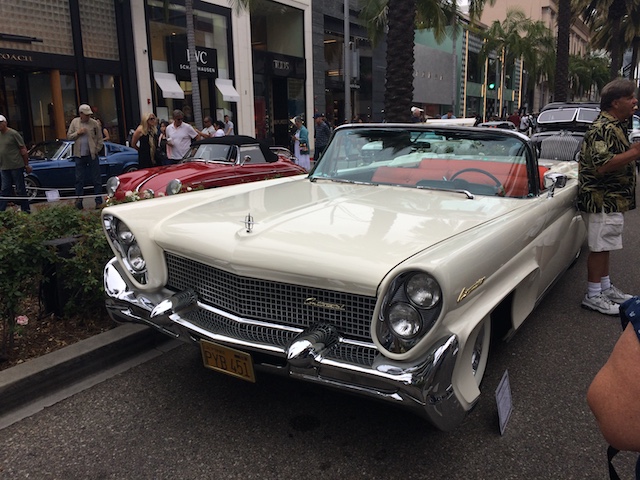JUNE 19, 2019
 Sunday, June 16, 2019 at 01:16PM
Sunday, June 16, 2019 at 01:16PM Editor-in-Chief's Note: Now that Phoebe Wall Howard has unleashed a multi-1000 word "think" piece on the carefully reconstructed brilliance of Jim Farley - it was so embarrassingly gushing that even Ford PR Chief Mark Truby must be blushing and staring at his shoes - the canonization of Farley has well and truly begun. (First we had to put up with "St. Elon" Musk; now we're burdened with "St. Jim" Farley. Pathetic.) I'm not going to go into it beyond saying that, after reading it, the uninformed might think that Farley walks on water, possesses the riveting intellect that occupies a space in the stratosphere beyond mere mortals, has never put a wheel wrong in his entire career, and is now solidly in the discussion to replace Jim Hackett when "Professor Moon Beam" wanders off into the sunset. This was a setup piece designed to portray a wonderfully benign Farley, an executive whose rise has no perceptible limit, and whose enduring warmth is something that people crave to bask in. This latest "humanization" campaign of Farley is pretty much unmitigated horseshit - aided and abetted by Wall Howard - and it has nothing to do with the "real" Jim Farley, the one hordes of people at Ford have grown to loathe with a seething level of disgust that is palpable. You want to know the real Jim Farley? This is what I had to say about him in May of 2018 in "Ford in Free Fall" (below). -PMD
But another situation is roiling Bill Ford’s decision making at this very moment, and it involves the rise of another executive, one who is unfettered by rational thought and untethered by accountability, and who has gone completely off the rails. Jim Farley, the former Toyota wunderkind who was responsible for the launch of the Scion brand, was brought in by Alan Mulally to be Chief Marketing Officer way back when. And not unexpectedly, his debut at Ford didn’t exactly get off to an auspicious start. Farley didn’t waste any time transforming himself into an enfant terrible right out of the gate. Displaying a prodigiously short attention span and burdened by an excruciatingly painful interpersonal awkwardness, Farley’s belligerent, condescending style of dealing with underlings, along with his classic “parachute in, helicopter out” M.O. that has defined bad actor executives for decades in this business, became his calling card. Internally, Farley became known as "The Two Jims," and interactions with him became a crap shoot, hinging upon whether people encountered the "good" Jim or the "bad" Jim on that particular day. Needless to say when the "bad" Jim was unleashed, Farley left a trail of bad feelings and highly questionable decisions in his wake.
Farley has long considered himself to be “the smartest guy in the room” at Ford, much to everyone’s endless chagrin, because the reality is that he isn’t. It’s a carefully crafted façade that is hollow to its core. Farley’s bad executive behavior starts with his inability to listen, considering his own counsel to be by far the best source when it comes to decision making. (Ironically this is the absolute opposite of Alan Mulally, who regularly canvassed multiple constituencies on major decisions.) And because of that, as well as a host of other annoyances, Farley left such a bitter taste in people’s mouths that when he was shipped off to run Ford of Europe several years ago the overwhelming sense of relief internally at Ford was palpable.
Blissfully unaware that he was universally loathed back in Dearborn, Farley seized upon his assignment in Europe, seeing it as a stepping stone to the executive suite at Ford. And the planets were aligned for him to come off as a hero there, too, because the European market had been in the doldrums for so long that the only way it could go was up. Steve Odell, who had been running Ford of Europe and had done all of the heavy lifting by closing plants and laying off people, set the table for Farley to succeed. And the inevitable happened, as Ford’s fortunes recovered in Europe along with the overall market. Farley took advantage of the opportunity and made sure all of the execs back in Dearborn could see what a genius he was, and unfortunately, too many fell for it.
The problem with all of this was that once Mark Fields was jettisoned from the company, not only did Bill Ford bring in Hackett, he brought Farley back from Europe, and made Joe Hinrichs and Farley co-No. 2 executives reporting to Hackett. And it proved to be a fateful decision, because at that very moment Farley decided that he was very much going to be The Guy.
As I said previously, an emboldened Farley, unfettered and untethered, turned out – predictably – to be disastrous. With his eyes set firmly on Hackett’s job, the very worst of Farley returned to Ford headquarters, only now his most repugnant qualities were magnified and amplified, with no one seemingly able to rein him in.
Besides his now-signature belligerence and rudeness in full view, Farley started to get out ahead of his skis, making decisions that were puzzling at best and potentially harmful to the long-term health of the company. Having been gunning for Ford’s advertising agency – the WPP-owned GTB – for years for slights both real and imagined, Farley almost immediately put the massive Ford account up for review. This, after WPP/GTB had been involved with Ford for 73 years. Could the advertising be improved? Certainly. And there's a way to do that. But destroying a long, fruitful relationship to assuage Farley’s gargantuan ego was flat-out irresponsible and uncalled for.
Farley also commandeered company appearances in front of financial analysts, something completely beyond his ken, thinking that if he demonstrated his acumen there that he would gain favor with Bill Ford and the board. And true to form, this proved to be a total disaster as well. Industry analysts are still talking about Farley’s cringe-worthy performance at the Deutsche Bank Global Auto Industry Conference here in Detroit back in January, where he came off as being someone who was flippant, woefully ill-prepared and not ready for prime time, and consequently Ford came off poorly too. Do you wonder why Ford can’t gain any traction on Wall Street? Farley’s dismal performance that night didn't do the company any favors.
And then there was the “we’re going to get out of the car business” decision that turned out to be an unmitigated PR disaster, because it was handled poorly and came off as a knee-jerk pronouncement that hadn’t been thought through. It turns out that the idea was Farley’s (no big surprise), wittingly or unwittingly aided and abetted by CFO Bob Shanks. And internally it bore the signature of a classic Machiavellian move by Farley as well, because Joe Hinrichs wasn’t even aware that it was going down until after the fact, which is almost beyond comprehension. (Editor-in-Chief's Note: I spoke with Mark Truby, Ford's PR Chief, and he said that Joe Hinrichs was aware of the car decision. I stand corrected. -PMD)
Am I picking on Farley? Hardly. I have only scratched the surface in describing this egomaniacal character and his blatant power grab, and the sad thing is that there are several other areas he is seeing fit to mess with inside of Ford that could wreak havoc on the company’s future for years. And this simply shouldn’t be, of course. One bad actor shouldn’t be causing this much consternation and hand-wringing throughout the enterprise, threatening to jeopardize everything the Ford Motor Company stands for. When everything is factored in, Jim Farley is simply the wrong person, in the wrong place, at the wrong time.
Bill Ford has a very difficult task facing him. He has to admit publicly (after first admitting it to himself) that Jim Hackett isn’t The Guy. Then he has to make sure that Jim Farley is kept as far away from being The Guy as is humanly possible, because left unimpeded Farley will be detrimental to the future of his family's company.
I closed last week’s column with the following words, which still resonate loud and clear today:
“In the meantime, since its future product announcement didn’t exactly set the world afire, the Ford executive team needs to press the reset button and focus on the task at hand. That means focusing on designing, engineering and building the best products they can muster for every segment the company competes in, despite the Wall Street cloud of negativity hanging over them.
Because in the end, there is one fundamental aspect of this business that will never change, and that is that it’s about the product, it has always been about the product, and it always will be about the product.”
 (Porsche images)
(Porsche images)
The 2020 Porsche 718 Cayman GT4 and 718 Spyder "represent the most powerful and engaging variants of the 718 lineup yet created," this is according to Porsche PR minions. Developed by the Porsche Motorsport department and offering a blend of pure, unfiltered driver’s car character and track-oriented performance, both models are powered by a new 4.0-liter naturally-aspirated flat-six engine developing 414HP and 309 lb.-ft. of torque. An entirely new sport exhaust system was designed specifically for the car to enhance the visceral flat-six sound of the engine, which can rev up to 8,000 rpm. Equipped with a six-speed manual transmission as standard, the 718 Cayman GT4 and 718 Spyder accelerate from 0 to 60 mph in 4.2 seconds. The six-speed manual offers an “Auto Blip” function that automatically matches gearbox and engine speeds during a downshift. This feature can be individually activated or deactivated at the touch of a button. The GT4 is capable of a top track speed of 188 mph, while the Spyder can reach 187 mph.  The 718 Cayman GT4 and 718 Spyder share a Porsche Active Suspension Management (PASM) setup with adaptive dampers, helper springs on the rear axle and a ride height that is 1.18 inches (30 mm) lower than a standard 718 Boxster or Cayman. It also allows for manual adjustments of camber, toe, ride height and anti-roll bar settings. The front axle is taken from the 2018 911 GT3, while the rear axle is a specific design for the GT4 and Spyder. The brakes on both models are adopted from the 911 GT3. The standard grey cast iron rotors measure 380 mm front and rear. The optional Porsche Ceramic Composite Brake (PCCB) system features ceramic composite rotors measuring 410 mm in the front and 390 mm at the rear, providing a weight savings of approximately 50 percent from the cast iron equivalents.
The 718 Cayman GT4 and 718 Spyder share a Porsche Active Suspension Management (PASM) setup with adaptive dampers, helper springs on the rear axle and a ride height that is 1.18 inches (30 mm) lower than a standard 718 Boxster or Cayman. It also allows for manual adjustments of camber, toe, ride height and anti-roll bar settings. The front axle is taken from the 2018 911 GT3, while the rear axle is a specific design for the GT4 and Spyder. The brakes on both models are adopted from the 911 GT3. The standard grey cast iron rotors measure 380 mm front and rear. The optional Porsche Ceramic Composite Brake (PCCB) system features ceramic composite rotors measuring 410 mm in the front and 390 mm at the rear, providing a weight savings of approximately 50 percent from the cast iron equivalents.  At the rear, a standard mechanical limited-slip differential with Porsche Torque Vectoring (PTV) helps to maintain optimum traction. The GT4 and Spyder are fitted with specifically designed 20-inch wheels shod with UHP tires measuring 245/35 ZR 20 at the front and 295/30 ZR 20 at the rear. The wheels as standard on the 718 Spyder feature a silver finish, while the GT4 is equipped with wheels painted in Satin Platinum. Other wheels finishes are optional. ABS as well as electronic stability (ESC) and traction (TC) controls have been specifically calibrated for the cars and, as is typical for a GT model, ESC and TC can be switched off in two stages. The 718 Cayman GT4 is capable of lapping the “Nordschleife” more than ten seconds faster than its predecessor. The 718 Cayman GT4 and 718 Spyder have their own unique styling elements. Both cars feature a front spoiler lip with recessed model designation, a central air outlet ahead of the front luggage compartment lid which aids downforce and cooling, as well as tinted taillights. The design of the 718 Spyder is further characterized by a manually-operated lightweight fabric top, a rear lid with two dynamic streamliners, and an automatically-extending rear spoiler designed specifically for the car. A new rear diffuser not only frames the sport exhaust system, but also reduces lift on the car. The 718 Cayman GT4 shares this diffuser, which contributes to an increase in downforce of approximately 50 percent compared to the predecessor, in conjunction with the redesigned, manually adjustable rear wing. Side air intakes with additional side blades are also specific to the GT4.
At the rear, a standard mechanical limited-slip differential with Porsche Torque Vectoring (PTV) helps to maintain optimum traction. The GT4 and Spyder are fitted with specifically designed 20-inch wheels shod with UHP tires measuring 245/35 ZR 20 at the front and 295/30 ZR 20 at the rear. The wheels as standard on the 718 Spyder feature a silver finish, while the GT4 is equipped with wheels painted in Satin Platinum. Other wheels finishes are optional. ABS as well as electronic stability (ESC) and traction (TC) controls have been specifically calibrated for the cars and, as is typical for a GT model, ESC and TC can be switched off in two stages. The 718 Cayman GT4 is capable of lapping the “Nordschleife” more than ten seconds faster than its predecessor. The 718 Cayman GT4 and 718 Spyder have their own unique styling elements. Both cars feature a front spoiler lip with recessed model designation, a central air outlet ahead of the front luggage compartment lid which aids downforce and cooling, as well as tinted taillights. The design of the 718 Spyder is further characterized by a manually-operated lightweight fabric top, a rear lid with two dynamic streamliners, and an automatically-extending rear spoiler designed specifically for the car. A new rear diffuser not only frames the sport exhaust system, but also reduces lift on the car. The 718 Cayman GT4 shares this diffuser, which contributes to an increase in downforce of approximately 50 percent compared to the predecessor, in conjunction with the redesigned, manually adjustable rear wing. Side air intakes with additional side blades are also specific to the GT4. The interior of both cars includes a standard GT Sport steering wheel measuring 14.1 inches (360 mm) in diameter; a top center marker in black is on the GT4. The shift lever is 0.39 inches (20 mm) shorter than on standard 718 models, and standard Sport Seats Plus with raised side bolsters provide a high degree of lateral support. The seat centers are upholstered in Alcantara, as is the steering wheel rim, the shift lever and the lower part of the dashboard. While the 718 Cayman GT4 has Brushed Aluminum interior trim, the trim pieces of the 718 Spyder are painted in exterior color; however other trims are optional. Optional on both models are Full Bucket Seats or electrically adjustable 18-way Adaptive Sport Seats Plus. Air conditioning and the Porsche Communication Management (PCM) system with Sound Package Plus are fitted as standard. The PCM system can be optionally upgraded with features such as navigation including Porsche Connect and Apple CarPlay®. The 718 Spyder can be ordered with the Spyder Classic Interior Package, which includes two-tone leather in Bordeaux Red and Black, extended Alcantara upholstery, GT Silver Metallic interior trim, and a new two-tone fabric top in black and red – reminiscent of historic Porsche racing cars. The 718 Cayman GT4 and the 718 Spyder offer the option of decorative interior stitching in Red, Silver or Yellow. The 2020 718 Cayman GT4 and 718 Spyder are available to order now and are expected to reach U.S. dealers in Spring 2020. The MSRP for the 718 Spyder is $96,300, while the 718 Cayman GT4 retails for $99,200 – both not including the $1,250 delivery, processing and handling fee.
The interior of both cars includes a standard GT Sport steering wheel measuring 14.1 inches (360 mm) in diameter; a top center marker in black is on the GT4. The shift lever is 0.39 inches (20 mm) shorter than on standard 718 models, and standard Sport Seats Plus with raised side bolsters provide a high degree of lateral support. The seat centers are upholstered in Alcantara, as is the steering wheel rim, the shift lever and the lower part of the dashboard. While the 718 Cayman GT4 has Brushed Aluminum interior trim, the trim pieces of the 718 Spyder are painted in exterior color; however other trims are optional. Optional on both models are Full Bucket Seats or electrically adjustable 18-way Adaptive Sport Seats Plus. Air conditioning and the Porsche Communication Management (PCM) system with Sound Package Plus are fitted as standard. The PCM system can be optionally upgraded with features such as navigation including Porsche Connect and Apple CarPlay®. The 718 Spyder can be ordered with the Spyder Classic Interior Package, which includes two-tone leather in Bordeaux Red and Black, extended Alcantara upholstery, GT Silver Metallic interior trim, and a new two-tone fabric top in black and red – reminiscent of historic Porsche racing cars. The 718 Cayman GT4 and the 718 Spyder offer the option of decorative interior stitching in Red, Silver or Yellow. The 2020 718 Cayman GT4 and 718 Spyder are available to order now and are expected to reach U.S. dealers in Spring 2020. The MSRP for the 718 Spyder is $96,300, while the 718 Cayman GT4 retails for $99,200 – both not including the $1,250 delivery, processing and handling fee.




(Honda images)
Shortly after American Honda Motor Co., Inc. first opened for business in 1959, the company purchased a small fleet of Chevy pickups to deliver motorcycles to its fledgling dealers across Southern California. One of these trucks is depicted in an iconic photo circa 1961 in front of AHM's original office at 4077 Pico Blvd. in Los Angeles. Underscoring their importance during those early days, American Honda restored a truck to authentically match the one in the old photo, helping celebrate the company's 60th anniversary. Tapping its U.S. archives and memories of retired Honda associates for details, a 1961 Chevy half-ton pickup was found and carefully renovated, replicating the original paint scheme as used by company salesmen delivering motorcycles to dealers to sell on a consignment basis. These trucks helped American Honda quickly establish a U.S. market foothold, starting in Southern California. By 1965, Honda was the best-selling motorcycle brand in America with a market share of almost 72 percent. To ready the special truck for its debut at AHM's 60th anniversary celebration on June 11, it was given a mild mechanical freshening plus new factory-correct white paint and hand-painted graphics like the originals. Two vintage motorcycles, a Honda 50 and CB160, like those originally carried in the trucks, are placed in the truck bed. The completed package is now on display in the lobby of American Honda's Torrance, Calif., headquarters. Plans for public display include the 2019 SEMA Show and other events around the country, as well as classic vehicle gatherings around Southern California. Ultimately, the truck will make its way to the American Honda Collection Hall in Torrance, where it will be staged in front of a replica of the company's original Los Angeles office.




RED RUN.
Editor's Note: Our tester this week was the 2019 Colorado AWD ZR2 Crew Short Box, which is also called the Colorado ZR2 Bison (life is short, so I will be calling it simply the Colorado from here on out). I know nothing about American Expedition Vehicles, the Montana-based parts and accessories supplier that partnered with Chevrolet to provide all the stuff that makes up the $5,750 ZR2 Bison Package, but I do like bison! And I think this Colorado looks pretty hot, but it should, it is RED HOT, according to the window sticker (I like it when the color actually looks like its name). I was worried that the Colorado wouldn't be big enough or "truck" enough or some sort of a compromise from the full-size Silverado (I am basically 'go big or go home' when it comes to vehicles). My fears were unfounded. The Colorado is plenty big. And although I did not actually "haul" anything other than groceries, there is no question that it would be a perfect Costco/Home Depot/garden store/patio rock hauler. Yes, it is somewhat spartan inside and has a very utilitarian feel, but it is, after all, a truck (the disconnect reenters the picture when you remember the sticker price...then, you wonder if maybe it couldn't be a bit more luxe). It does have a real key that you put in a real ignition (how quaint). And I am big on compartments, so the Colorado gets high marks in that department. Overall, there is a lot to like about the Colorado. It has personality and attitude and all of that good truck stuff. But all those Bison accoutrements and that Duramax diesel are pricey, and this Colorado topped out at just over $53k. That's a lot of bison burgers. -WG

Editor-In-Chief's Note: Our tester this week was definitely one out of the usual for us: a 2019 Chevrolet Colorado 4WD ZR2 Short Box pickup. Not only that, it had the full-zoot ZR2 Bison package to boot. We've had a Colorado before, but the ZR2 Bison is something entirely different. First of all, the 2.8-liter Direct-Injected DOHC DURAMAX 4-cylinder Turbo Diesel is the news with this package. With 181HP and 369 lb-ft of torque @ 2,000 rpm, I have to say that this Diesel was more than up to the task. It was responsive, torquey and well suited to the urban slog, and it handled the freeway cut and thrust with aplomb. Now, we get it, with the ZR2 Bison, your backyard should be a ranch in - ahem - Colorado, or an off-road park in Southern California or Arizona, but that was not in the cards for our experience with this pickup. But nonetheless I thought the drivetrain was impressive and acquitted itself well. The multi-faceted ZR2 Bison package by American Expedition Vehicles adds a hefty $5,750 to the price, but it is definitely well-finished and looks the part, if the "look at me, I'm an off-road Dude" is what you're looking for. The Colorado ZR2 Bison is definitely not my thing, but I can see the appeal to a very narrowly-focused market. But, $53,000+ for a toy with an off-road look? No thanks. -PMD


By Tom Pease
Beverly Hills. Father's Day, June 16th, marked the 26th annual Concours on Rodeo. Three blocks between "Little" Santa Monica and Wilshire Boulevards are closed-off to display classic cars to a crowd estimated to be 35,000 people. This year was about Bentley, which showed all of the new models as well as its timeless classics. Here are a few photos from the event. If you're in Los Angeles around Father's Day, this event certainly well worth your time. But get there early, because by noon the crowds are, well, crowded.
